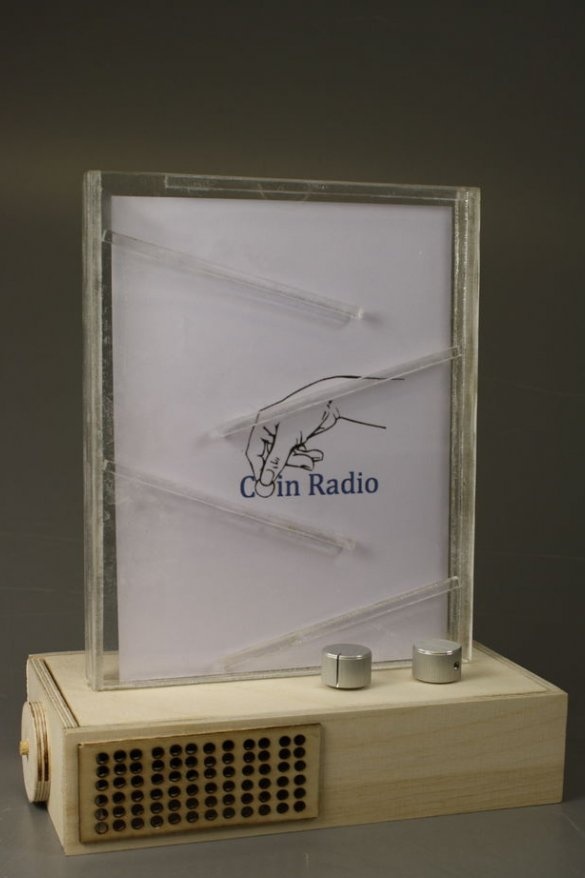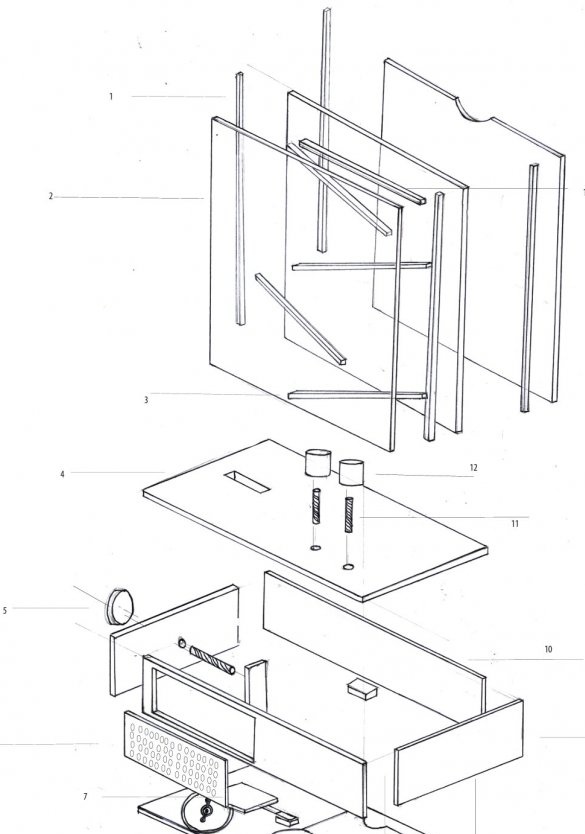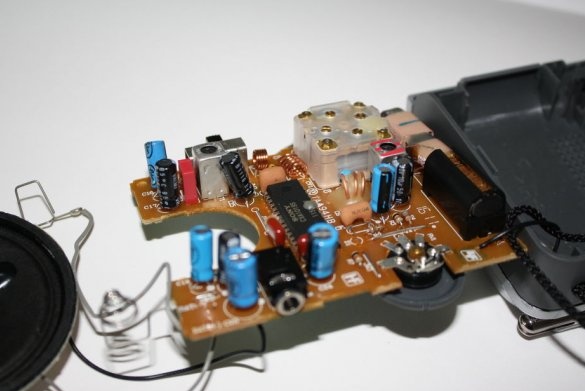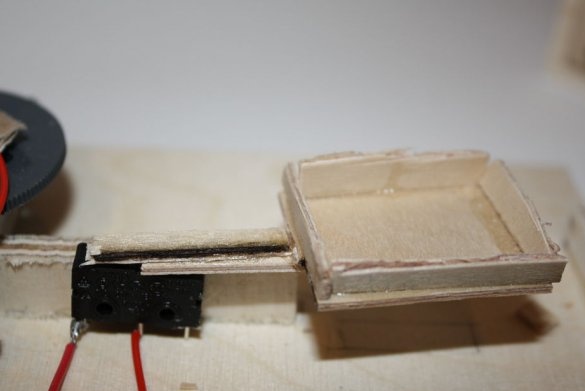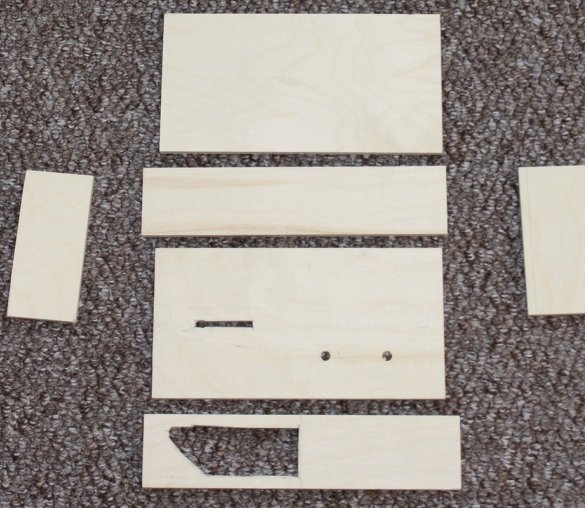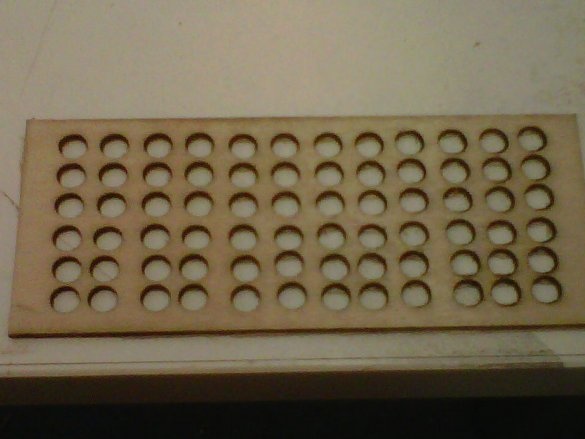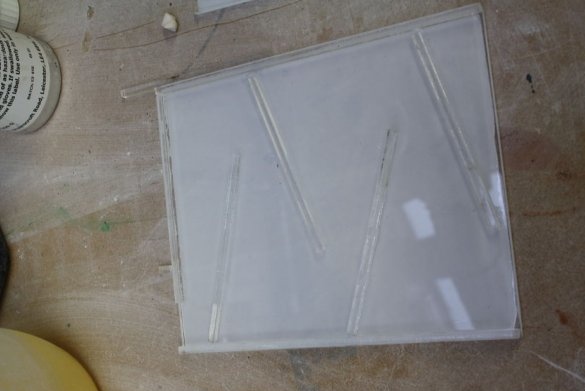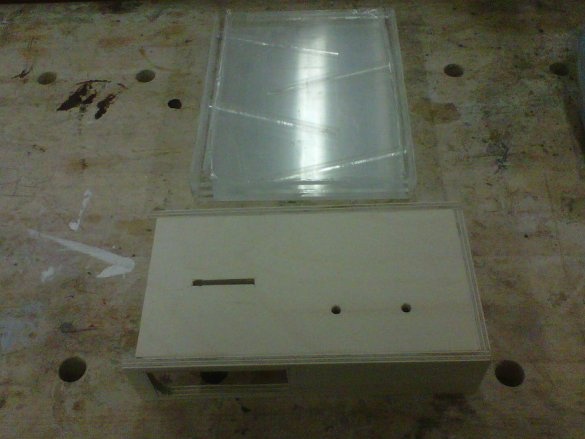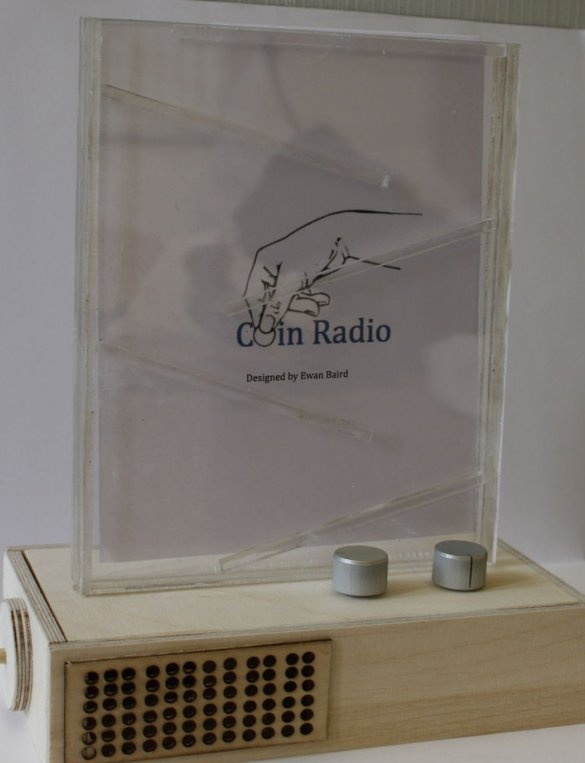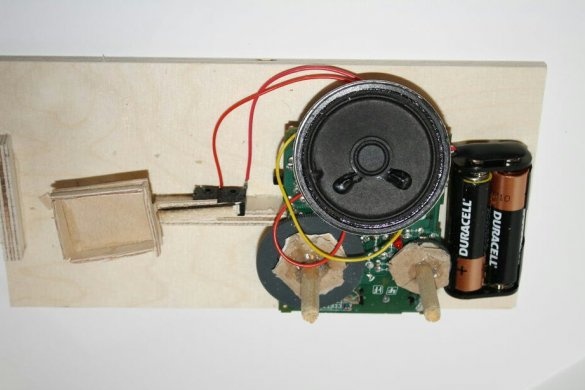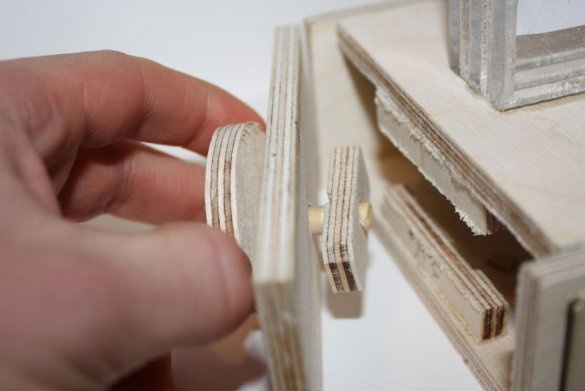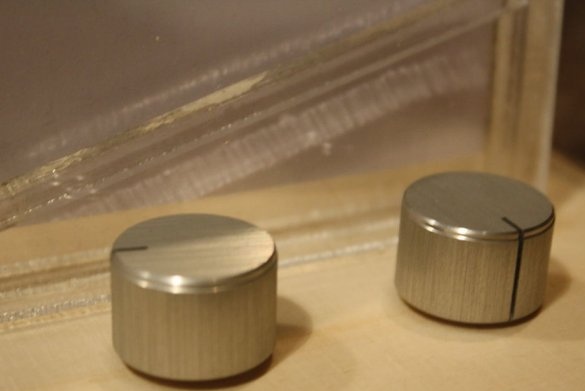In the book of N.N. Nosova “Dunno on the Moon” (in English speaking countries her official translation is known as Dunno on the Moon) is described in the Economic Hotel, where the low cost of living is compensated by the fee for using the equipment in the room. This is not an invention - in the middle of the last century, such experiments were actually carried out, but the idea did not take root. The author of Instrictables under the nickname ejzbaird came up with a radio with a coin acceptor, allowing you to feel like a guest of such a hotel. True, the “santik” in it is “unchangeable”: turning the handle and removing the side wall, you will get the coin back.
Instead of a coin acceptor with a “tongue” mentioned in the book (they also existed in reality until they were replaced by the slotted ones we are used to today), we used a design of three sheets of plexiglass, between the first two of which four inclined planes are glued one above the other. The coin overcomes them one by one, after which it enters the plywood case and causes the microswitch to trip. Between the second and third sheets of plexiglass, you can put some kind of picture or photograph.
Although the design seems simple in appearance, ejzbaird just cut out a whole bunch of details for it:
Below is a list of them:
1 - rods of rectangular cross-section to obtain gaps, located on the sides, 220x5 mm, plexiglass, laser cut, 4 pcs.
2 - front, middle and back sheets, 220x180 mm, plexiglass, cut with a band saw, 3 pcs.
3 - inclined planes, 120x5 mm, plexiglass, laser cut, 4 pcs.
4 - upper and lower walls, 207x107 mm, plywood, cut with a band saw, 2 pcs.
5 - handle of the side wall removal mechanism, plywood, cut with a band saw, 1 pc.
6 - dynamic head grill, plywood, laser cut, 1 pc.
7 - a bowl with a lever, where “santik” falls, plywood, consists of several small parts, carved with a knife and glued, 1 pc.
8 - battery compartment for two 1.5 volt cells, 1 pc.
9 - side walls, 107x50 mm, plywood, cut with a band saw, 2 pcs.
10 - front and rear walls, 220x50 mm, cut with a band saw, 2 pcs.
11 - rods with a diameter of 6 mm for volume and tuning knobs, plywood, cut with a band saw, 2 pcs.
12 - volume knobs and settings, metal, purchased ready-made, 2 pcs.
13 - a rod of rectangular cross section, in order to lower a coin it was possible only on the left, 150x5 mm, plexiglass, laser cut, 1 pc.
14 - a dynamic head, was already in the radio, 1 pc.
Ejzbaird pulled out a board, a dynamic head and an antenna from the body of the radio.He could carefully saw off the battery compartment from the case, but instead took another, more convenient one.
Between the battery compartment and the board, the master placed a micro switch and made a bowl with a lever pressing it when a coin is lying there.
Further ezjbaird shows the details of the foundation separately:
2 pcs. 220x50 mm - front and rear walls.
2 pcs. 107x50 mm - side walls.
2 pcs. 207x107 mm - upper and lower walls.
In that wall with dimensions of 220x50 mm, which will be the front one, he cut a 97x38 mm hole on the left.
In the wall with the dimensions of 207x107 mm, which will be the top one, the master drilled two holes with a diameter of 6 mm in increments of 30 mm (depending on the board) for the rods of the volume and adjustment knobs, and also cut a gap on the left into which the santik would fall.
All details from plexiglas ejzbaird cut from plexiglas of the same thickness. Which one is uncritical, he turned out to be five millimeters. Let's list these parts again:
3 pcs. 220x180 mm - front, middle and back sheets.
4 things. 220x5 mm - rods of rectangular cross section to obtain gaps, located on the sides.
4 things. 120x5 mm - inclined planes for the coin.
1 PC. 150x5 mm - a rod of rectangular cross section, so that the coin could be lowered only on the left.
Small parts are cut with a laser, large parts with a band saw.
The speaker grill size 100x40 mm is laser cut, although it is plywood. This made it possible not to drill holes, but to receive the part immediately with them. They can be made in other shapes and sizes and arranged as you like.
The grill closes the hole in the front wall.
In the back sheet of plexiglass, ejzbaird cut a notch to facilitate the replacement of drawings or photographs. On the sides, he glued the side rods to provide a gap, and to them - the middle sheet of plexiglass. To him, in turn, the master glued the same side rods, as well as inclined planes and the upper rod, necessary so that the coin could be lowered only to the left. Together it turned out like this:
When assembling the base case, ejzbaird did not forget that the bottom and left side are removable, they do not need to be glued.
The master processed the finished packet of sheets of plexiglass with a burner so that the edges were not sharp. Then he glued this bag to the base so that the coin after all inclined planes fell into the slot in the upper wall of the case.
The master attached a plate to the bottom wall, for which a lock tongue, a battery compartment, a microswitch with a bowl and a lever, a board and a dynamic head will hook. To the volume and tuning knobs on the board, he glued the rods strictly in the center through cardboard strips. The master accurately selected the position of the board so that the rods pass through the holes for the upper wall intended for them.
It remains to add a lock with a handle to the left side wall, the same plate for catching the lock tongue to the upper side wall, and after installing the lower wall with mechanics and electronics, making sure that the rods enter the holes for the upper wall intended for them, put on the volume knobs on them and settings. Before removing the bottom wall (to access the battery compartment), the handles must be temporarily removed from the rods.
We put the side wall in place, place a picture or photo between the middle and back sheets of Plexiglas, lower the coin between the front and middle sheets, wait for it to be in the case, set up the receiver and listen. To get a coin, turn the lock knob, remove the left side wall, remove the “santik”, and the receiver turns off. We put the wall in place and fix it with a lock. We change the picture or photograph as we get bored.

